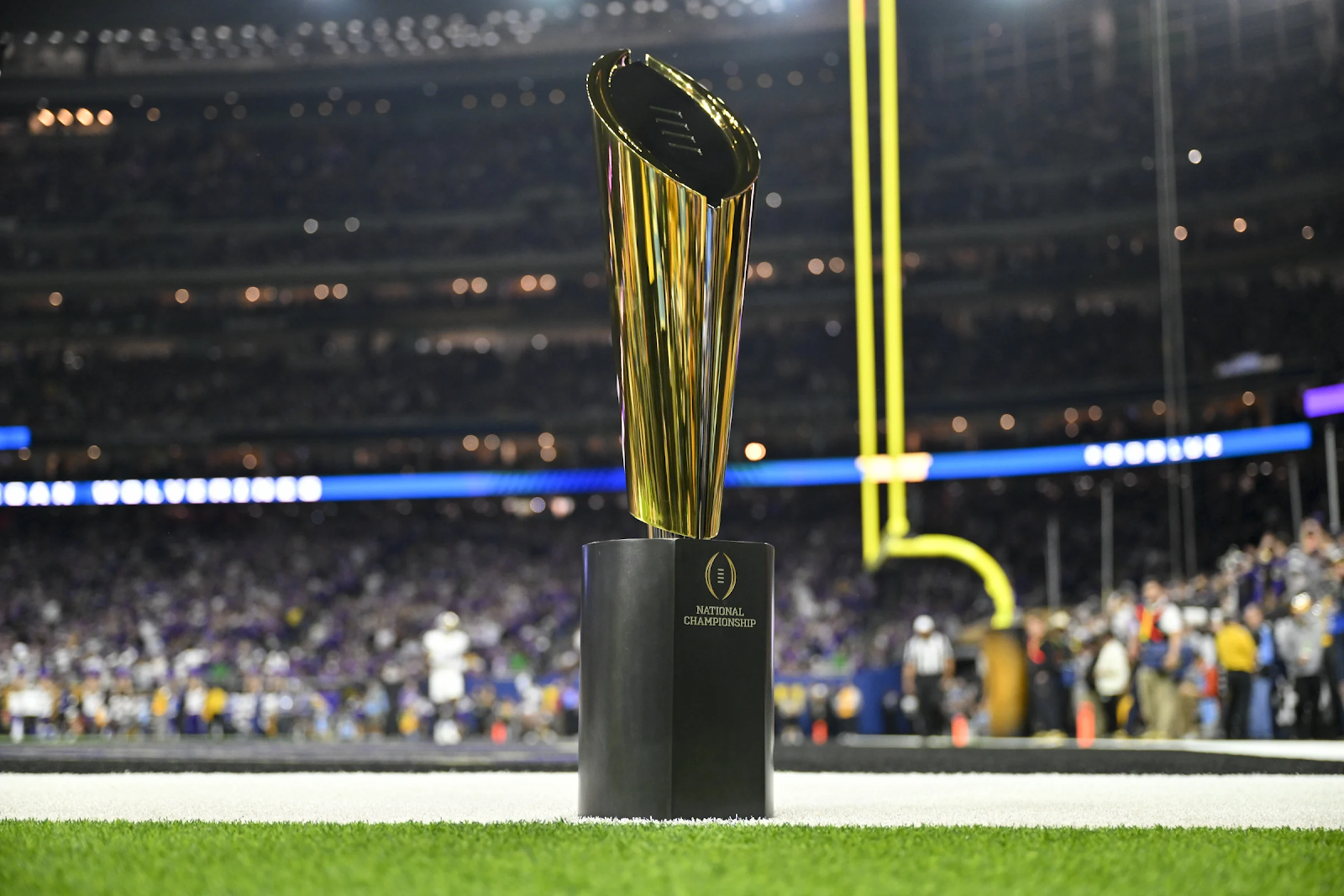Long heralded as the pinnacle of college sports, March Madness now has serious competition. Of course, I say that tongue in cheek, as the same folks for both sports are making money.
However, for decades, March Madness was known as the biggest college sporting event on the planet. Dick Vitale once famously said on-air (I can't find the clip so I'll paraphrase), College Basketball will always be king because of the tournament.
Yes the GREATEST SPORTING EVENT OF THE YEAR IS COMING SOON / nothing better than at @MarchMadnessMBB pic.twitter.com/ldy9LBV1uv
— Dick Vitale (@DickieV) February 20, 2022
Well, a new sheriff may be in town.
The NCAA rolls out their first ever legitimate playoff this season, with 12 teams competing for a National Title. This includes a 5+7 model, which grants automatic qualifying spots to the five highest-ranked champions and seven at-large spots to the next highest-ranked teams.
In theory, this gives everyone a shot at the title.
I know what you're saying, anyone can move up the rankings. But let's say a Cincinnati team makes a run at a 13-0 season. Presumably, they started at the bottom of the Top 25, or even outside the Top 25. So their climb would be slower because of that pesky "strength of schedule" argument. Meanwhile, let's say Michigan starts #2 and loses. Hypothetically, they lost to a Power 5 school and probably ranked, so they barely drop. This will basically ensure all the typical teams will make the CFP based on strength of schedule.
Well, where does their strength of schedule come from? It comes from....you guessed it, rankings. Here we go again. And using the Michigan scenario, let's say they have an Appalachian State mishap again (not likely), if they run the table in the B1G, they'll be right back in the Top 10 and in the playoff. Houston or Cincinnati does not get that luxury.
Let's look on the positive, at least we've expanded. But the topic is, will this be bigger than March Madness?
March Madness accounts for all conference champions. The CFP may carry on for decades and still only include half the conferences participating. If you put much weight in that, then score one for March Madness.
On the other hand, football is already king. During the 2022 season, Americans streamed 4.1 billion minutes of live college football. Whereas, college basketball sees a huge spike during March Madness to ensure it's a close second behind football in viewership. Take away March Madness, and college football destroys college basketball in viewership.
Wait, that almost sounds like a point for March Madness, but that isn't fair since a real CFP hasn't taken place yet. Let's call it a tie.
Let's look at the format. The above image is what the playoff would've looked like last year. Those first-round games? Home games for the higher seed! Yes, we may actually see a coastal team play in the snow!
Home games will be huge. My biggest gripe with the college basketball tournament is first and second-round games are often played in front of sparse crowds at some colossal arena. It sometimes doesn't feel like an "event."
Score one for the CFP.
Next up is anticipation. Almost unfair, since fans have been screaming for a football playoff for years, so the anticipation is at an all-time high. Of course, the NCAA knows what it is doing. They refused to have a basketball tournament for decades too, until two wealthy businessmen and the Metropolitan Basketball Writers Association made their own in 1938.
This may be the most anticipated college football season of all time.
Lastly, financial windfall and how it is shared with the schools. Most of the money is generated through TV contracts. Hence why 12oz Sports and our small budget limit us to amateur and small college sports, and we love it, by the way.
As of 2022, college football revenue brought in, on average, $32 Million per school. Yes, per school. Whereas, in the 2021-22 academic year, the NCAA raked in $1.15 billion in basketball revenue, with the tournament accounting for nearly 90% of the entire amount!
In basketball, the tournament has a "performance fund", where they distribute roughly $180 Million per year to all conferences, which then gets dispersed amongst schools. Each tournament win results in one unit, with a unit being around $340,000.
However, in football, as mentioned earlier, each university gets a piece of the TV pie. And now, with the college football playoffs, the pie gets bigger.
"The SEC and Big Ten schools will see their annual distribution triple if not quadruple to around $23 million (SEC) and $20-21 million (Big Ten). Those in the ACC and Big 12 will earn anywhere from $12-14 million. Notre Dame will earn $12.5 million annually, plus a $6 million bonus if it qualifies for the playoff — an $18.5 million figure. Independents, such as Notre Dame, receive the one-time participation bonus, but all other participation bonuses — which are in the current model — were removed." (Dellinger, R; 2024).
G5 programs will see a $300,000-500,000 increase to about $1.8 million.
So while there have been huge arguments that the SEC and B1G will benefit more financially than all other conferences, it still is significantly more than March Madness brings to conferences.
Score one for the CFP.
So...sadly for Dick Vitale, who we all love, college football is officially King. Many of you already thought that, but using metrics of participation, anticipation, format, and financials....I think we have a clear winner.
Buckle up folks, as Keith Jackson used to say...."Whoah Nelly." This is going to be one helluva football season!
Visit our site at 12ozsports.com





Comments
Post a Comment